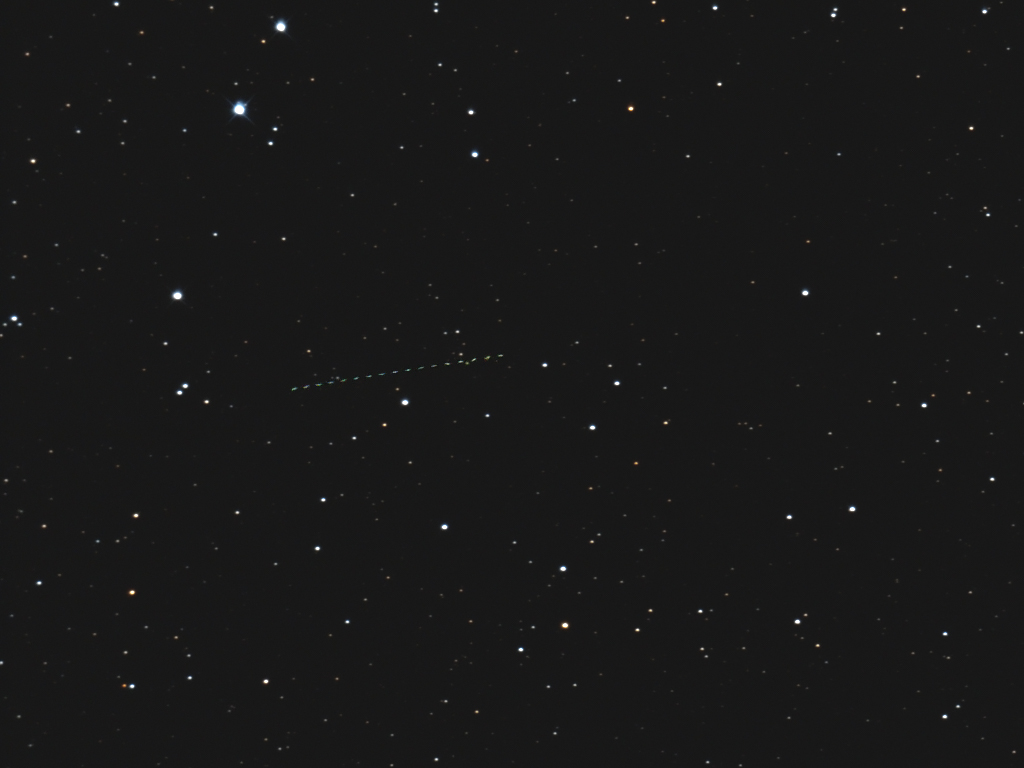
Telescope: GSO 8” f/12 Classical Cassegrain @ f/12, Orion Atlas EQ-G
Camera: Canon EOS Ra, Baader Mk III MPCC
Filter: 2” GSO IR Blocking Filter
Guide scope: Astro-Tech 60mm, Starlight Xpress Super Star, PHD2
Exposure: 17x180sec, ISO 800, saved as RAW
Darks: Internal (Long Exposure Noise Reduction On)
Flats: 32×1/20sec, Tee shirt flats taken at dusk
Average Light Pollution: Red zone, Bortle 8, fair transparency
Lensed Sky Quality Meter: 18.4 mag/arc-sec^2
Stacking: Mean with a 1-sigma clip (sky); maximum (JWST).
White Balance: Nebulosity Automatic
Software: Backyard EOS, Deep Sky Stacker, Nebulosity, Photoshop
The dashed line crossing to the left of center in this field is the James Webb Space Telescope as it was approximately 538,000 miles out crossing Monoceros on its way to a halo orbit around the Earth’s L2 Lagrange point. I located the field using an ephemeris generated by the JPL Horizons Web App. Shining at about 15th magnitude I initially thought that I had missed the telescope as I was getting different positions from different sources. Just like my annual pilgrimage to Pluto, the telescope wasn’t the star that I thought it was in the source images. When I was about to give up, thinking that it wasn’t in the field, I blinked the first and last pictures in the sequence. After several minutes of searching I finally spotted the telescope moving on the left side of the source field. I then re-processed the source images using a normal mean with a sigma clip to stack the background sky, and a maximum combine to stack the images of the telescope. There were combined into a single image in Photoshop and cropped to center the telescope as best I could. The track shows as a series of short dashes, each dash showing the apparent motion of the telescope during the 3-minute exposure. The gaps in the track are from the 3-minute darks taken between each frame and the time needed to transfer the image to my computer. The motion itself is mostly parallax from the rotation of the Earth and not the telescope itself.
When the telescope arrives on-station it is expected to fade to about magnitude 17 where it should be within easy reach of cameras and small telescopes. The telescope will also be located near the Earth’s shadow, so it should remain well placed in the evening sky throughout most of the night. Neat stuff!
Recent Comments